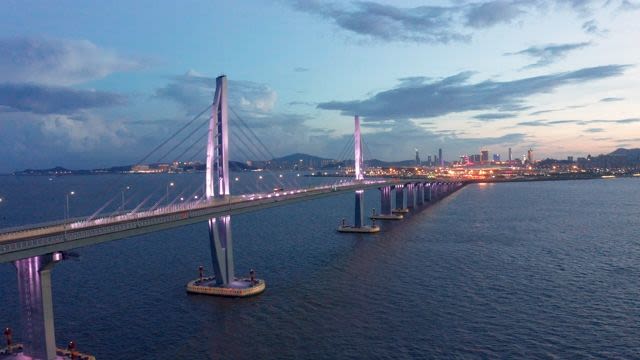- BY Kevin Barry BSc(Hons) MRICS
- POSTED IN Latest News
- WITH 0 COMMENTS
- PERMALINK
- STANDARD POST TYPE

Comparing the planning and building times for major infrastructure projects in China and the UK reveals stark differences, driven by distinct political systems, planning processes, and approaches to development. While comprehensive, project-by-project data is limited, evidence from key examples and broader trends highlights these disparities.
In China, major infrastructure projects are often completed at an exceptionally rapid pace due to a centralized, hierarchical planning system and minimal public opposition. For instance, China’s high-speed rail network, a flagship infrastructure achievement, grew from virtually nothing in 2008 to over 45,000 kilometers (approximately 28,000 miles) by 2025. This expansion, achieved in less than two decades, equates to an average construction rate of over 2,500 kilometers per year. Specific projects, like the Beijing-Shanghai high-speed rail line (1,318 km), were planned and built in just four years (2008–2011), from groundbreaking to operation. Similarly, the Daxing International Airport in Beijing, one of the world’s largest single-terminal airports, took five years from planning approval in 2014 to opening in 2019. This speed is enabled by China’s authoritarian governance, which allows for swift decision-making, streamlined approvals, and the ability to override local objections or land disputes, often through state-led land requisition.
In contrast, the UK’s democratic system, with its emphasis on public consultation, environmental assessments, and legal challenges, results in significantly longer timelines. The High Speed 2 (HS2) railway, intended to connect London to Birmingham and eventually northern England, exemplifies this. Planning began in 2009, with formal government approval in 2017, yet construction only started in 2020. The first phase (London to Birmingham, 225 km or 140 miles) is not expected to be operational until at least 2030–2033, totaling over 20 years from initial planning to partial completion. Even then, the project has faced delays, cost overruns, and scope reductions, with the northern leg beyond Birmingham now uncertain. Another example, the Heathrow Airport third runway, has been under consideration since the early 2000s, with a government decision in 2016, yet legal challenges and planning hurdles mean construction has not begun as of 2025, potentially pushing completion past 2040—over 30 years from inception.
The disparity in timelines stems from several factors. China’s process benefits from a top-down approach, where the central government sets ambitious targets (e.g., the Five-Year Plans) and local governments execute with little resistance. Public participation is limited, and environmental or social concerns are often secondary to economic goals. Conversely, the UK requires extensive consultation under the Planning Act 2008 for Nationally Significant Infrastructure Projects (NSIPs), involving multiple stages—pre-application, examination, and decision—each subject to public input and judicial review. For HS2, this meant years of debate over routes, environmental impacts, and costs, compounded by resistance from local communities and “NIMBY” (Not In My Backyard) groups.
Quantitatively, China’s major projects often take 4–10 years from planning to completion, while UK equivalents frequently span 15–30 years or more. The UK’s process, while slower, aims for transparency and sustainability, though it often results in higher costs and delays—HS2’s cost per mile is estimated at over £700 million, compared to China’s high-speed rail at roughly £20–30 million per mile. China’s speed, however, can come at the expense of quality, debt accumulation, and social displacement, as seen in its “ghost cities” or overbuilt rail lines.
In summary, China typically plans and builds major infrastructure in a fraction of the time required in the UK—often a decade or less versus two to three decades—reflecting the trade-offs between efficiency and democratic accountability.
